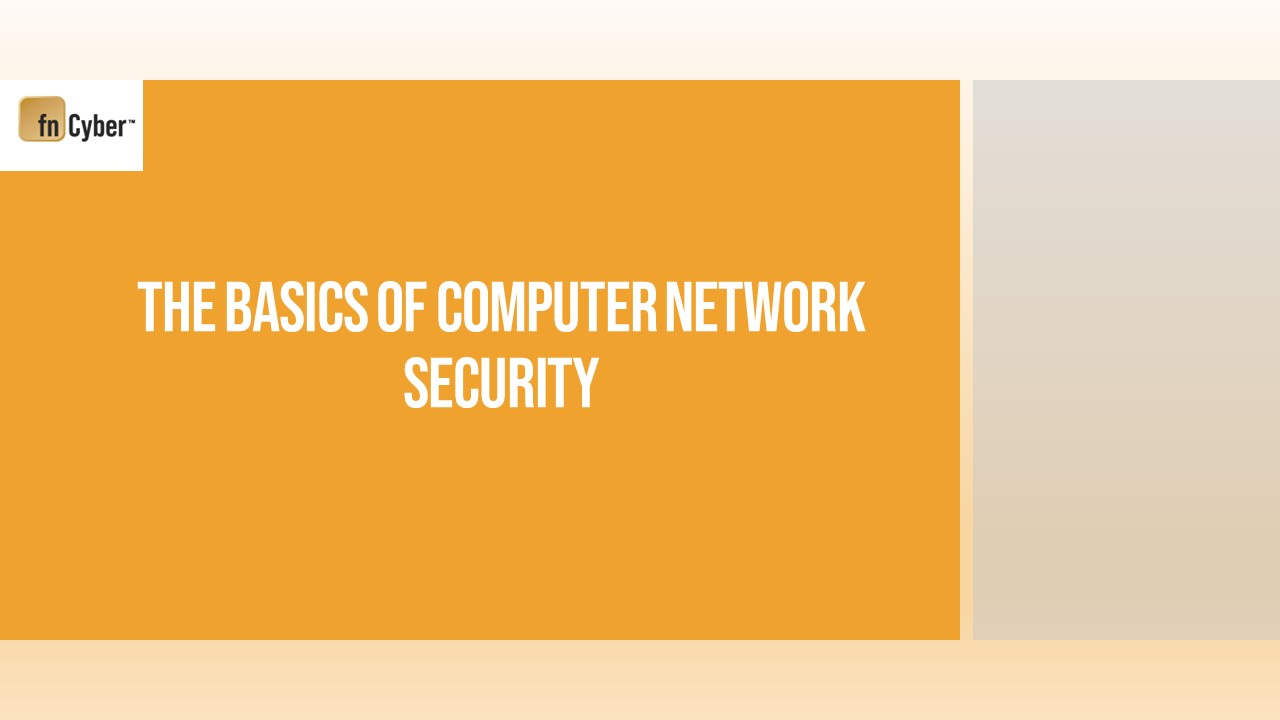The Basics of Computer Network Security - PowerPoint PPT Presentation
Title:
The Basics of Computer Network Security
Description:
We, as seasoned experts in the field, are here to delve deep into the intricacies of network attack patterns, network security attacks, IT security, and the role of a Cybersecurity Consultant. Our aim is not just to educate but to empower you with the knowledge you need to safeguard your digital assets. – PowerPoint PPT presentation
Number of Views:1
Date added: 12 December 2023
Slides: 11
Provided by:
katherinewilliams
Category:
Medicine, Science & Technology
Tags:
Title: The Basics of Computer Network Security
1
The Basics of Computer Network Security
2
- In today's digital age, where the world is
interconnected through a web of networks and data
flows ceaselessly, ensuring the security of these
networks has become paramount. We, as seasoned
experts in the field, are here to delve deep into
the intricacies of network attack
patterns, network security attacks, IT security,
and the role of a Cybersecurity Consultant. Our
aim is not just to educate but to empower you
with the knowledge you need to safeguard your
digital assets.
3
Understanding Network Attack Patterns
- Network attack patterns are like the fingerprints
of cyber threats. They are distinctive methods or
sequences of actions that cybercriminals employ
when attempting to breach a network's defenses.
Recognizing these patterns is fundamental to
effective network security.
4
Common Network Attack Patterns
- Phishing Attacks Phishing is a deceptive tactic
wherein cybercriminals masquerade as trustworthy
entities to trick users into revealing sensitive
information. These attacks often come in the form
of emails or websites. - Malware Infections Malware, short for malicious
software, is a broad category of software
designed to harm or gain unauthorized access to
computer systems. Common types include viruses,
trojans, and ransomware. - DDoS Attacks Distributed Denial of Service
(DDoS) attacks flood a network or server with
traffic to overwhelm it, causing a disruption in
service. These attacks can be devastating for
businesses. - Man-in-the-Middle Attacks In these attacks, an
adversary intercepts communication between two
parties without their knowledge. This allows them
to eavesdrop or manipulate the information being
exchanged. - Brute Force Attacks Cybercriminals use brute
force attacks to gain access to systems by
systematically trying every possible combination
until they find the correct password or key.
5
Network Security Attacks How to Protect Your
Assets
- The Importance of Network Security
- With the increasing frequency and sophistication
of network attacks, investing in network
security is not just a choice but a necessity.
The consequences of a security breach can be
severe, including financial losses, damage to
reputation, and legal liabilities.
6
Best Practices for Network Security
- Firewalls and Intrusion Detection Systems
(IDS) Implement robust firewalls and IDS to
monitor and filter incoming and outgoing network
traffic, blocking potential threats. - Regular Updates and Patch Management Keep all
software and systems up to date with the latest
security patches to mitigate vulnerabilities. - Employee Training Educate your employees about
cybersecurity best practices, including how to
recognize phishing attempts and other threats. - Data Encryption Encrypt sensitive data both in
transit and at rest to ensure that even if it
falls into the wrong hands, it remains
unintelligible. - Access Control Enforce strict access controls to
limit who can access specific resources within
your network.
7
The Role of a Cybersecurity Consultant
- What Does a Cybersecurity Consultant Do?
- A Cybersecurity Consultant plays a critical role
in helping organizations protect their digital
assets. They are experts in identifying
vulnerabilities, developing security strategies,
and implementing measures to safeguard against
network security attacks.
8
Why Hire a Cybersecurity Consultant?
- Expertise Cybersecurity consultants are highly
trained professionals with an in-depth
understanding of evolving cyber threats and
defense strategies. - Custom Solutions They tailor security solutions
to your organization's unique needs and
vulnerabilities. - Threat Assessment Consultants conduct thorough
assessments to identify potential weaknesses and
vulnerabilities in your network. - Incident Response In the event of a security
breach, consultants are equipped to respond
swiftly and effectively to minimize damage and
data loss.
9
- In conclusion, safeguarding your digital assets
in the face of ever-evolving network attack
patterns and network security attacks is crucial
in today's technology-driven world. By
understanding these threats, adopting best
practices, and considering the expertise of
a Cybersecurity Consultant, you can significantly
reduce the risk of falling victim to
cyberattacks. - Remember, while this article provides valuable
insights, staying informed and proactive in the
realm of IT security is an ongoing commitment.
Protecting your network is not just a choice
it's a responsibility in our interconnected
digital landscape
10
THANKYOU































